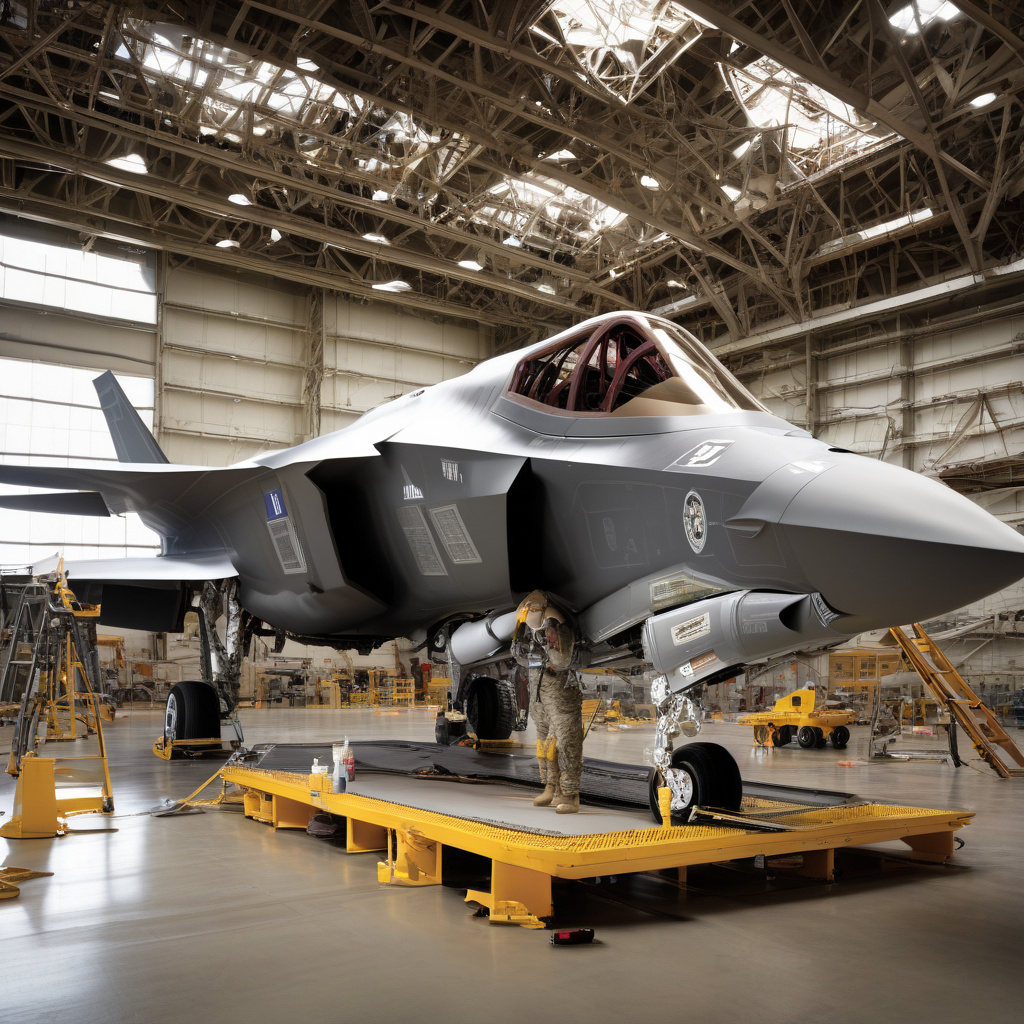Belly landed F-35 Resurrected by Joint US-Korea Surgery with World-First Wing Repair
In a remarkable achievement, the US-run F-35 Joint Program Office (JPO) and South Korea have come together to perform a groundbreaking surgery on a belly-landed F-35 fighter jet. The aircraft, which encountered a mishap during a routine training exercise, suffered significant damage to its wings upon landing. However, instead of deeming it irreparable and writing it off as a loss, the collaborative efforts of American and South Korean engineers have brought the aircraft back to life through innovative repair techniques.
The F-35 fighter jet, known for its advanced stealth capabilities and cutting-edge technology, is a crucial asset for both the United States and its allies. When one of these high-tech machines experienced a belly landing, resulting in severe damage to its wings, many believed that it would be beyond repair. However, the JPO and South Korean engineers saw an opportunity to showcase their expertise and push the boundaries of what was previously thought possible in aircraft maintenance.
What makes this achievement even more remarkable is the world-first repair technique that was employed to fix the damaged wings of the F-35. By utilizing state-of-the-art materials and cutting-edge technology, the team was able to not only restore the structural integrity of the wings but also enhance their performance beyond their original specifications. This breakthrough in aircraft repair could potentially revolutionize the way damaged fighter jets are handled in the future, setting a new standard for maintenance and repair practices in the aviation industry.
The successful resurrection of the belly-landed F-35 serves as a testament to the power of collaboration and innovation in overcoming seemingly insurmountable challenges. By pooling together their resources, knowledge, and expertise, the US and South Korea have not only salvaged a valuable asset but also demonstrated their unwavering commitment to ensuring the readiness and reliability of their military aircraft.
This unprecedented feat also highlights the importance of investing in research and development to stay at the forefront of technological advancements in the defense sector. As the global security landscape continues to evolve, nations must constantly strive to enhance their military capabilities and readiness to effectively respond to emerging threats and challenges. The successful repair of the F-35 showcases the potential for breakthroughs in innovation that can significantly impact the defense industry and pave the way for future advancements in aerospace technology.
In conclusion, the joint US-Korea surgery that resurrected the belly-landed F-35 with a world-first wing repair represents a remarkable achievement in the field of aviation maintenance and repair. By pushing the boundaries of what was previously thought possible and leveraging innovative techniques, the collaborative efforts of the JPO and South Korea have not only restored a valuable asset but also set a new standard for aircraft repair practices. This groundbreaking accomplishment serves as a shining example of the power of cooperation, ingenuity, and perseverance in overcoming challenges and achieving success in the ever-evolving world of military aviation.
F-35, US-Korea, Joint Program Office, Innovation, Aviation Industry












